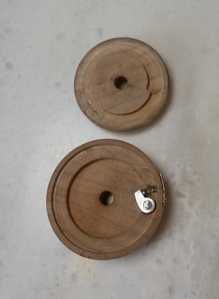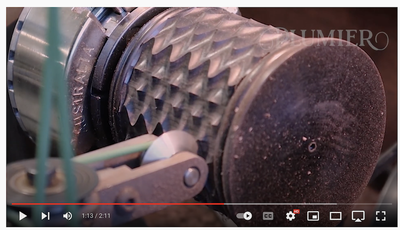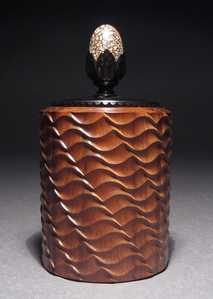Update to “Adapting my Rose Engine Crossing Wheel to use a Stepping motor”
For those who had expressed interest, I decided to build a prototype of my design for a clutch that’s specifically for a Stepper Motor. It’s made from wood and a bit of metal - just to see if the concept would actually work (or if there were some Holes in my supposition). It seems to do what is needed. The Pic01 shows that it is made in 2 components.
Piece #1 (top of pic01) is attached firmly to the stepper.
Piece #2 is is driven by the stepper via piece #1. Although piece #2 is directly engaged with the Rose Engine spindle via a cogbelt, the clutch allows the driven side to freely rotate when the spindle is under (separate) power.
“Phasing” happens when the stepper is activated to change the position of the workpiece relative to the spindle. Being normally engaged, the clutch will facilitate rotating the workpiece to its new location via a cogbelt. Even though the stepper is still engaged (via the cogbelt) the main spindle can freely rotate while the cutting process is executed and the stepper remains in synch. Upon completion of cutting each section or “band” of the workpiece (through 360 degrees) the clutch is automatically in position for the next “phase” to take place.
Pic02 shows an embellished workpiece that has NOT been phased. Pic03 shows one that has been phased. Note that in Pic02 each band of embellishment is precisely in line with the one preceding it and so on, all across the whole perimeter of the workpiece. Whereas, in Pic03 the pattern created is phased to create a spiralled “flow” to the workpiece. That’s achieved by the changing the orientation of the workpiece relative to the preceding band of embellishment; ie. "phasing" (which is what this is all about).
Mechanically, I’m pretty sure that this will work so my next challenge is to learn how to write the necessary code for the Arduino board to control the whole phasing process. No doubt I’ll be looking for help when that happens. Thanks for your interest.
Gary



